People
Veteran Chinese Curator Pi Li on the Region’s Diversifying Market and Leading One of Hong Kong’s Up-and-Coming Cultural Venues
Pi recently stepped into the role of head of art at Tai Kwun, after a decade at M+.
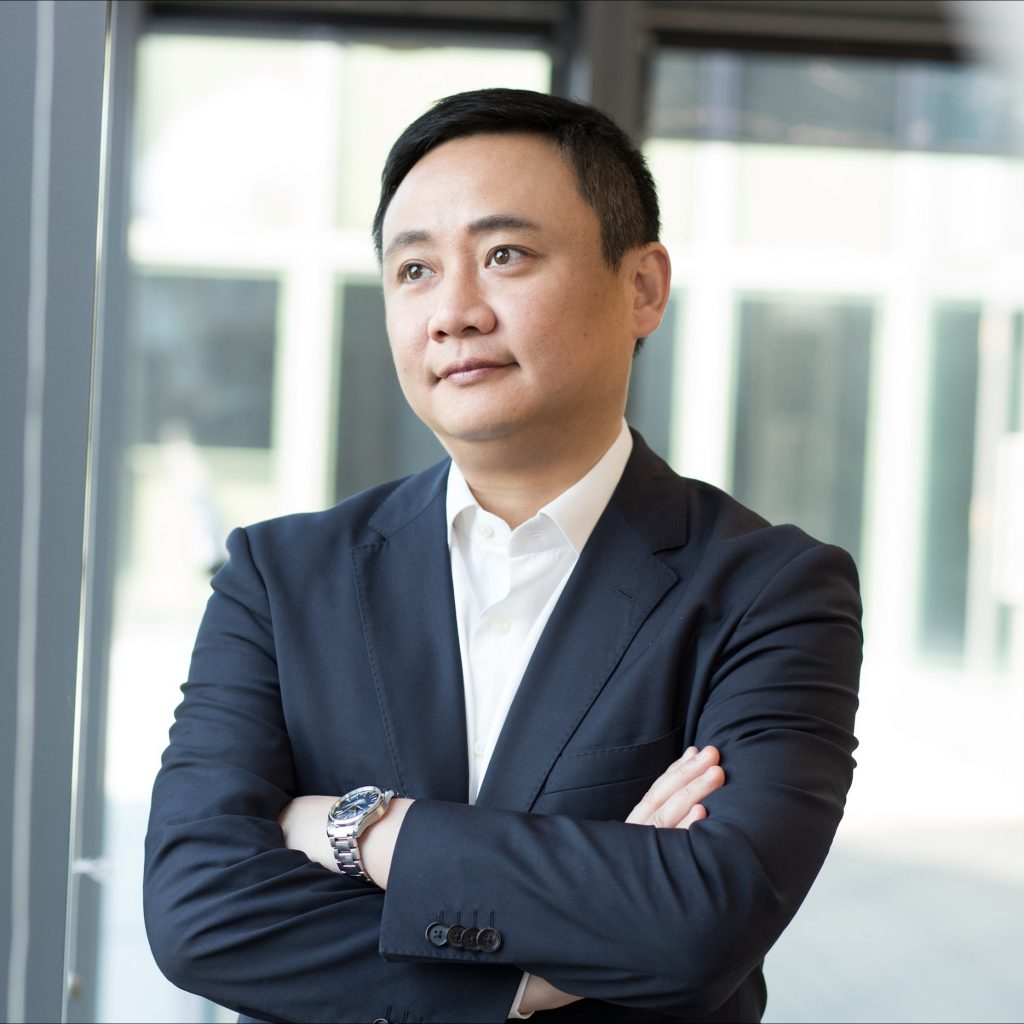
Pi recently stepped into the role of head of art at Tai Kwun, after a decade at M+.

If you were to talk about the rapidly developing Chinese art world, Pi Li won’t go unmentioned—the art world veteran’s career having spanned the beginning, boom, and transition of the Chinese contemporary art market.
Initially a young critic and curator after receiving his doctorate from the Central Academy of Fine Arts, Pi once served as the deputy executive director of the art administration department at the university. In 2005, he cofounded Boers-Li Gallery in Beijing (now Spurs Gallery) at a time when China’s local contemporary art gallery scene was sprouting. He then departed the gallery in 2012, to much surprise, for a senior curator position at M+ in Hong Kong.
Also one of the founding executives of M+, Pi has overseen the museum’s planning and opening, as well as the building and expansion of its collection. More importantly, he has witnessed the dramatic changes in the social, political, and cultural environment of Hong Kong over the past few years, particularly the impact of the 2020 pandemic. A year after the museum’s opening, Pi has again shifted gears, stepping into the role of head of art at Tai Kwun, a young arts and heritage venue in Hong Kong, in February 2023.
Ahead of Hong Kong Art Week, Pi spoke to Artnet News about his tenure at M+, his new role at Tai Kwun, and Hong Kong’s art futures.
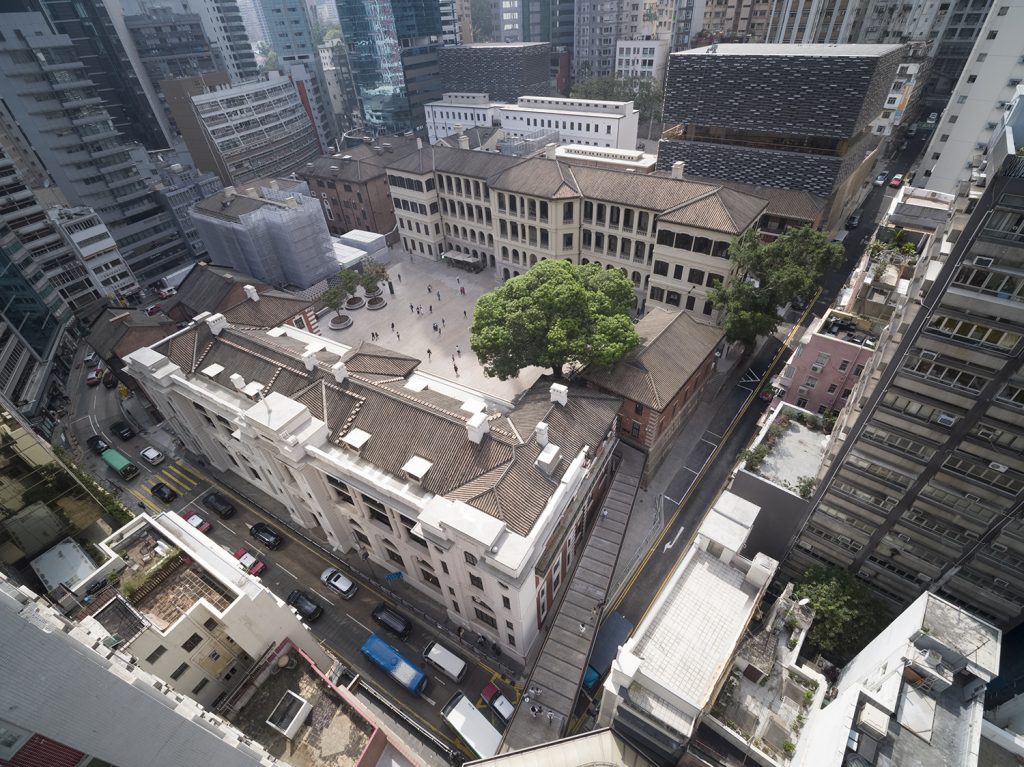
Aerial shot of Tai Kwun. Photo courtesy of Tai Kwun.
As a veteran of the Chinese art world, do you think Hong Kong’s position as an Asian art hub remains unshaken?
Yes, and I think there are several reasons. Although everyone was comparing Hong Kong with Singapore and Seoul not long ago, there is a big difference between the art markets in the three cities. The art market in Hong Kong started in the 1990s, with auction houses coming in first, and galleries like Hanart TZ Gallery and others doing it spontaneously at that time. Both the auction houses and galleries pushed the market forward. After the 2000s, art fairs started to appear and more galleries came in after that. Let’s not forget that Hong Kong is still a huge distribution center for Asian cultural antiques.
The Hong Kong art market is a diversified market that has gradually formed over the decades. It has been a spontaneous process of formation, which is very different from Singapore and Seoul which are stimulated by government policies. Of course, when it comes to the dynamism of the whole economy, after the pandemic, many families and companies moved their offices to Singapore. But after normalcy resumed in Hong Kong, many businesses started to flow back in again. I personally have more confidence in Hong Kong.
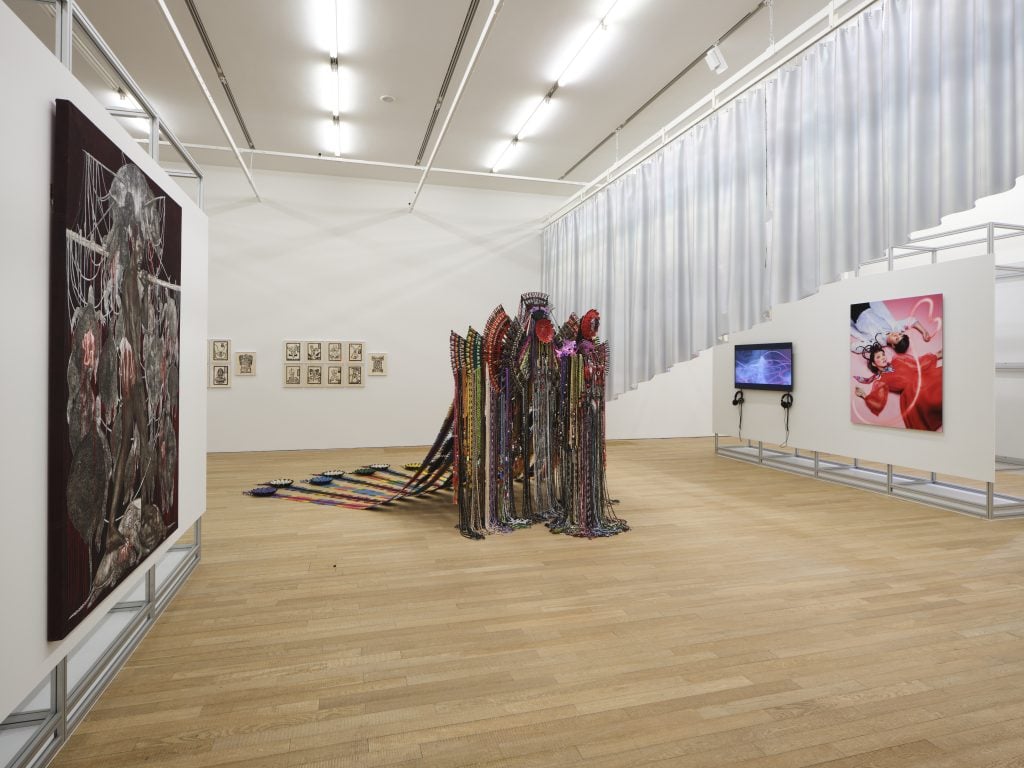
Installation view of “Myth Makers — Spectrosynthesis III” at Tai Kwun. Photo: South Ho, courtesy of Tai Kwun.
I was in Hong Kong last month and saw the LGBTQ+-themed group exhibition at Tai Kwun. In some of your earlier interviews, you mentioned that Hong Kong is a place that allows freedom of research, curation, and expression. Do you think that such conditions of freedom will still remain or exist in Hong Kong in the future?
I think such conditions have always existed in Hong Kong. During the pandemic, there was a lot of misinformation spread by some international press. I would like to give two examples. One is that some press outlets have reported that more than 100,000 people have left Hong Kong in a year, but according to figures I saw last year, 220,000 people also left Singapore, not to mention how many people chose to leave the U.K. after Brexit that year. You can’t rely on a mere number to make any judgment; our era is a globalized, constantly mobile one.
The second example is something I personally experienced, which I feel very angry about. When M+ opened in 2021, our exhibition line-up was planned ahead in 2018, and some media outlets claimed that the line-up had been changed due to “censorship.” But in fact, not even a single artwork was changed or removed. I think this incident spoke volumes about the international bias against Hong Kong as a result of media spin.
This is why I feel that this upcoming Art Basel Hong Kong is very important, and I hope that my international colleagues, professionals, and art collectors will be able to experience M+’s collection and exhibition projects for themselves, as well as the LGBTQ+ exhibition that is currently on view at Tai Kwun. They speak volumes about the current cultural situation in Hong Kong.
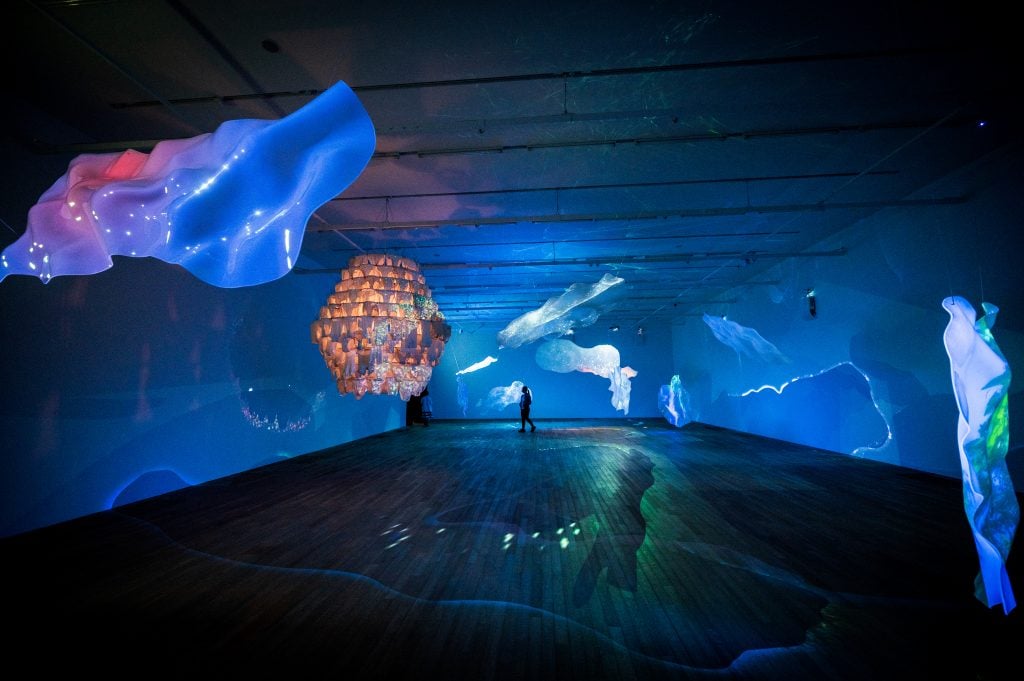
Installation view of Pipilotti Rist, Behind Your Eyelid (Big Skin) (2022). Photo courtesy of Tai Kwun.
It’s been nearly 11 years since you first moved to Hong Kong. Do you think the local audience’s perception of contemporary art in Hong Kong has changed over the years?
It has changed a lot. When I first came to Hong Kong, Hong Kong people were critical of contemporary art, and they did not understand it. Many thought that such a big project as M+ was meaningless. But things started to change after the museum opened in 2021.
In the first year and a half, we welcomed more than two million visitors (not counting international audiences), and have completely changed people’s perceptions. With the opening of the Tai Kwun in 2018, the culture of contemporary art has gradually penetrated the hearts of Hong Kong citizens. No one now is questioning whether Hong Kong needs a contemporary art venue anymore; people are just saying, “I like this contemporary art or I don’t, and here’s why.”
Why did you decide to join Tai Kwun? When was the discussion happening?
I was among the first 10 employees when I first joined M+; the museum now employs nearly 200 people. I think I accomplished a lot at M+, such as facilitating the landing of the Sigg Collection. After 10 years at M+, I wondered if I should do something else interesting. In the U.S., institutional diversity is important, and Hong Kong, with a population of seven million people, has reached another stage where it needs this kind of institutional diversity—meaning it needs both international museums equivalent to a MoMA, and institutions like MoMA PS1 and Tai Kwun, which can bring a sense of freshness. I wanted to do something about that, and that was the first important reason.
Another reason is that before I came to Hong Kong, I had already done many international contemporary art projects, including the earliest YBA exhibition in 2006 and the Antony Gormley exhibition in 2003. I was also the curator of the Japan Foundation’s Asia project. I thought it was time to do some international art, so in that sense, Tai Kwun is the best place for me to be.
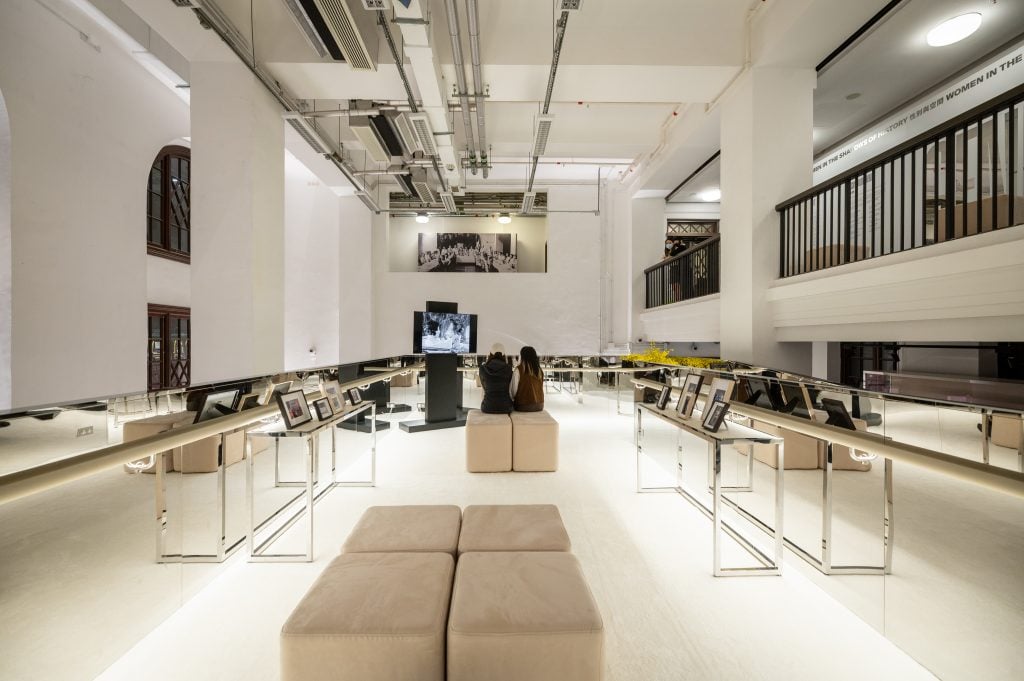
Installation view of “Gender & Space” at Tai Kwun. Photo courtesy of Tai Kwun.
Can you tell us about your new role at Tai Kwun? What are your main responsibilities and direction of your job?
My focus is Tai Kwun Contemporary within Tai Kwun. But besides the contemporary art programs, I am also in charge of public art in the whole area of Tai Kwun. Many contemporary art projects are integrated with cultural heritage, so you can see that my position is not Director but Head of Art because I am responsible for bigger and broader matters than the gallery itself.
From this perspective, there are a few things that Tai Kwun will establish with its future projects: First, it will always be an international art center that reflects the current art scene. The second point is that we still want Tai Kwun to faithfully reflect the art scene in Hong Kong and Asia as a whole, while helping younger artists to thrive.
The third is that there is another strand in the program of Tai Kwun, developed by previous and current curators in the past seven or eight years—like Xue Tan who curated performance art that lasted for four or five weeks in the gallery—of projects that are constantly pushing the boundaries of the gallery. So we also hope to do something in the field of performance art from the curatorial side, combining traditional theater and performance in the gallery.
In the past, Asian institutions often borrowed from Western institutions, but in recent years Asia has established its own systems and approaches. How do you see the exchange and interaction between the West and Asia developing in the future?
After the pandemic, the most important thing is that museums are thinking about the environment, which is a common issue that museums are facing worldwide. This leads directly to the question: Is it time to shift the paradigm of traditional blockbuster exhibitions and large-scale touring exhibitions? For example, the U.K. is now talking about the carbon footprint of each exhibition.
Over the past 10 years, foreign galleries have been bringing artists to Asia for exhibitions, and I think this is being seen in other Asian countries as well. So one of the core changes is that this kind of exchange will no longer be one-way, but two-way or even multi-way. The Mori Art Museum in Japan, M+, Singapore Art Museum, and the National Museum of Modern Art in Seoul, just to name a few, have formed a small “museum ecosystem.” Within this region, I think more and more exhibitions will tour, and dialogue with European and American exhibitions will happen in the future. Not only will Western artists come to the East, but we will also present retrospectives of our regional artists and bring them to the international arena.